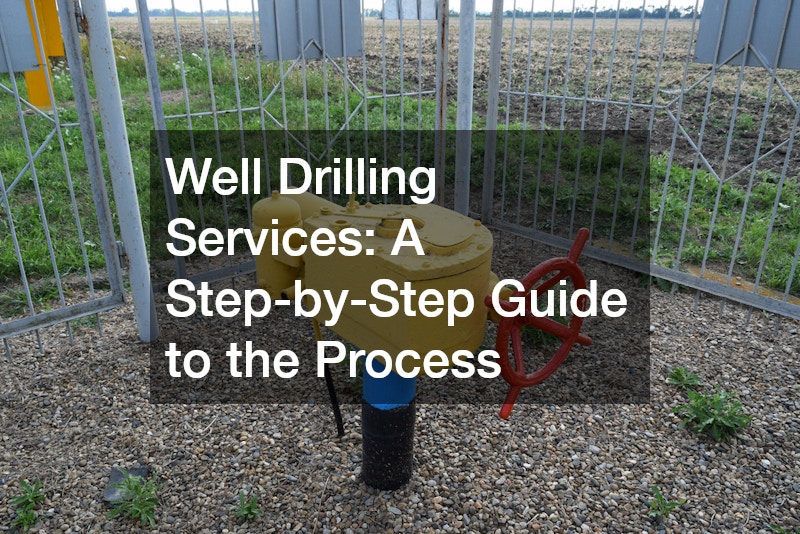This article provides a comprehensive overview of well drilling services, detailing the step-by-step process involved, answering common questions, and highlighting essential considerations for a successful well drilling project. Understanding the intricacies of well drilling can significantly impact both the project’s efficiency and longevity. By following this guide, readers will be empowered to make educated decisions regarding their water resource ventures.
1. What is the Well Drilling Process?
Understanding the Basics
Explore the fundamental steps involved in well drilling, including site evaluation and determining drilling requirements. Before drilling begins, a crucial step is evaluating the site to ensure it is viable and suitable for accessing underground water sources.
The well drilling process requires precise planning to determine the appropriate drilling methods and equipment that should be used. Experts analyze geological factors that might affect the drilling process, such as soil composition and water table depth.
Effective site evaluation not only ensures access to a reliable water source but also helps in minimizing environmental impact. Anticipating potential challenges upfront allows for more efficient execution of the drilling process.
Drilling Techniques and Equipment
Discuss the various drilling techniques used, such as rotary and percussion drilling, and highlight the types of equipment deployed during the process. Rotary drilling is preferred for its ability to reach greater depths, using a rotating drill bit to penetrate through different layers of soil.
Percussion drilling, on the other hand, involves hammering into the ground to break hard substrata, making it ideal for shallower wells in rocky terrains. Both methods necessitate specialized equipment, including drill rigs, casing materials, and mud pumps.
Technological advancements have led to improved drilling accuracy and efficiency, ensuring wells are constructed with precision. The right choice of technique and equipment can drastically impact the cost and success of a well drilling project.
2. How to Choose a Well Drilling Contractor?
Essential Qualities to Look For
Identify the key attributes and certifications necessary when selecting a reliable well-drilling contractor. It is imperative to choose a contractor with proper licensing and experience in the specific type of well drilling required for the project.
Accreditation and customer testimonials can offer insights into the contractor’s reliability and professionalism. Contractors should also possess a deep understanding of local regulations and environmental considerations.
Reliable contractors will employ safe practices and have the necessary insurance to cover any project-related incidents. Selecting a qualified professional can ensure both regulatory compliance and successful project outcomes.
Questions to Ask a Potential Contractor
Provide a list of important questions to ensure the contractor’s expertise, experience, and reliability. Begin by inquiring about their prior projects and success rates with similar types of wells.
It’s essential to ask for their proposed timeline and methodologies for your specific project to gauge their planning and execution capabilities. Additionally, understanding their approach to unforeseen challenges or complications will give peace of mind regarding their problem-solving skills.
Requesting references or testimonials from past clients can help verify their claims of proficiency. Open and transparent communication with your contractor is key to fostering a cooperative and successful partnership.
3. What are the Costs Involved in Well Drilling?
Factors Affecting Well Drilling Costs
Examine the various factors that influence the cost of drilling a well, such as location, depth, and permit requirements. The depth of the well is one of the most significant cost determinants, as deeper wells require more resources and time.
Location also plays a critical role in cost estimation; remote areas or sites with difficult access can increase transportation and equipment costs. Compliance with local regulatory requirements and necessary permits can further impact the financial aspects of drilling.
Unforeseen geological challenges can also alter project costs and timelines. Budgeting for contingencies ensures financial preparedness for such eventualities.
Estimating Your Well Drilling Budget
Offer guidance on how to budget for a well drilling project, including tips on managing unexpected costs. Start by obtaining multiple detailed quotes from various contractors to establish a baseline for expected expenses.
It’s crucial to account for both fixed costs, such as permits and materials, and variable costs that may arise during drilling. Building a contingency fund helps prepare for additional expenses from unexpected challenges or changes in project scope.
Maintaining open communication with your contractor about potential cost variables can prevent financial surprises. Being proactive in financial planning ensures that the drilling project remains within budget and achieves its intended goals.
The key points covered in the article emphasize the importance of thorough planning and research in well drilling projects, and encourage readers to make informed decisions by consulting experienced professionals. The complexity of well drilling demands strategic planning and the involvement of skilled experts.
By understanding the processes, costs, and contractor requirements, individuals can navigate their projects effectively and ensure long-term success. Utilizing resources and consulting with experienced professionals guarantees the development of a well-constructed and sustainable water source.





